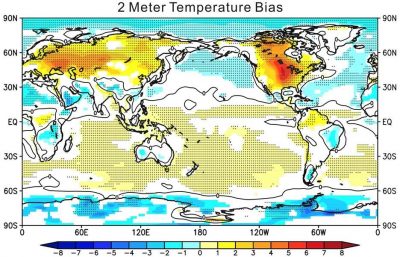Set of papers investigates temperature differences between models and observations
A new group of four papers published in Journal of Geophysical Research: Atmospheres explores why earth system models simulate warmer surface temperatures than ground-based observations show in the central United States.

The papers, led by authors from Lawrence Livermore National Laboratory and the U.K. Met Office, focus on results from the Clouds Above the United States and Errors at the Surface (CAUSES) project. The U.S. Department of Energy’s (DOE) Atmospheric System Research and Regional and Global Climate Modeling programs supported the work.
CAUSES used measurements from the DOE Atmospheric Radiation Measurement (ARM) Climate Research Facility’s Southern Great Plains atmospheric observatory in Oklahoma and Kansas to help evaluate numerical weather prediction models and Coupled Model Intercomparison Project Phase 5 earth system models. The project sought to identify how cloud, radiation, and precipitation processes contributed to the warm bias, or offset from observations, of surface air temperature.
Researchers attributed the differences between models and observed data to simulations of deep convective clouds and the evaporative fraction (a ratio of latent heat flux to the sum of sensible and latent heat fluxes) at the surface.
Eos, an earth and space science news publication of the American Geophysical Union (AGU), featured a post about the CAUSES papers on its Editors’ Vox blog. Journal of Geophysical Research: Atmospheres is an AGU journal focusing on atmospheric properties and processes.
Read the research highlights for the CAUSES papers: Morcrette et al., Van Weverberg et al., Ma et al., and Zhang et al.
# # #
This work was supported by the U.S. Department of Energy’s Office of Science, Office of Biological and Environmental Research as part of the Atmospheric System Research Program.

